
(publ. Princeton University Press)
From Caligari to Hitler: A Psychological History of the German Film is a book by film critic and writer Siegfried Kracauer, published in 1947.

From Caligari to Hitler: A Psychological History of the German Film is a book by film critic and writer Siegfried Kracauer, published in 1947.
This work of film theory is one of the first major studies of German film between World War I and World War II and is best known for proposing a link between the apolitical and escapist orientation of Weimar-era cinema and later German totalitarianism. Kracauer—known as an important film critic in Germany from the 1920s onward—moved from exile in France to the United States in 1941. Once settled in New York City, he received support from the Rockefeller and Solomon R. Guggenheim foundations to conduct research on Nazi film. His first publication from these investigations, Propaganda and the Nazi War Film (1942), examines visual themes in Nazi propaganda films as tools of psychologal influence. The second work Krakauer published from his research is From Caligari to Hitler in 1947. [1] [2]
The book identifies and examines four chronological phases of German film between the wars: The Archaic Period (1895–1918), The Postwar Period (1918–1924), The Stabilized Period (1924–1929) and The Pre-Hitler Period (1930–1933). The volume also reprints Propaganda and the Nazi War Film, the author's critical and psychological analysis of Nazi propaganda film. As a film critic, Kracauer reviewed many of the films discussed in the book at the time they were released. From Caligari to Hitler melds his understanding of trends in the film market with analysis of political tendencies of German social politics.
Kracauer proposes that Robert Wiene's film The Cabinet of Dr. Caligari is an allegory for German social attitudes. Kracauer argued that Caligari symbolizes autocratic tendencies inherent in the German system, observing that the character "stands for an unlimited authority that idolizes power as such, and, to satisfy its lust for domination, ruthlessly violates all human rights and values." [3]
In Weimar Cinema and After, Thomas Elsaesser describes the legacy of Kracauer's work as a "historical imaginary". [4] Elsaesser argues that Kracauer had not studied enough films to make his thesis about the social mindset of Germany legitimate and that the discovery and publication of the original screenplay of The Cabinet of Dr. Caligari undermines his argument about the revolutionary intent of its writers. Elsaesser's alternative thesis is that the filmmakers adopted an Expressionist style as a method of product differentiation, establishing a distinct national product against the increasing importation of American films. Dietrich Scheunemann, somewhat in defense of Kracauer, noted that he did not have "the full range of materials at (his) disposal". However, that fact "has clearly and adversely affected the discussion of the film", referring to the fact that the script of Caligari was not rediscovered until 1977 and that Kracauer had not seen the film for around 20 years when he wrote the work. [5]
The 2014 documentary film From Caligari To Hitler: German Cinema In The Age Of The Masses by Rüdiger Suchsland , drawn its title from the book and share some of Kracauer's opinions on Weimar cinema. [6] [7]

The film industry in Germany can be traced back to the late 19th century. German cinema made major technical and artistic contributions to early film, broadcasting and television technology. Babelsberg became a household synonym for the early 20th century film industry in Europe, similar to Hollywood later.

Weimar culture was the emergence of the arts and sciences that happened in Germany during the Weimar Republic, the latter during that part of the interwar period between Germany's defeat in World War I in 1918 and Hitler's rise to power in 1933. 1920s Berlin was at the hectic center of the Weimar culture. Although not part of the Weimar Republic, some authors also include the German-speaking Austria, and particularly Vienna, as part of Weimar culture.
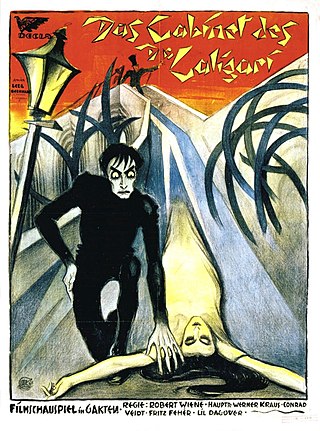
The Cabinet of Dr. Caligari is a 1920 German silent horror film, directed by Robert Wiene and written by Hans Janowitz and Carl Mayer. Considered the quintessential work of German Expressionist cinema, it tells the story of an insane hypnotist who uses a somnambulist to commit murders. The film features a dark and twisted visual style, with sharp-pointed forms, oblique and curving lines, structures and landscapes that lean and twist in unusual angles, and shadows and streaks of light painted directly onto the sets.

Siegfried Kracauer was a German writer, journalist, sociologist, cultural critic, and film theorist. He has sometimes been associated with the Frankfurt School of critical theory. He is notable for arguing that realism is the most important function of cinema.

Georg Wilhelm Pabst was an Austrian film director and screenwriter. He started as an actor and theater director, before becoming one of the most influential German-language filmmakers during the Weimar Republic.

The Frankfurter Zeitung was a German-language newspaper that appeared from 1856 to 1943. It emerged from a market letter that was published in Frankfurt. In Nazi Germany, it was considered the only mass publication not completely controlled by the Propagandaministerium under Joseph Goebbels.
UFA GmbH, shortened to UFA, is a film and television production company that unites all production activities of the media conglomerate Bertelsmann in Germany. The original UFA was established as Universum-Film Aktiengesellschaft on December 18, 1917, as a direct response to foreign competition in film and propaganda. UFA was founded by a consortium headed by Emil Georg von Stauß, a former Deutsche Bank board member. In March 1927, Alfred Hugenberg, an influential German media entrepreneur and later Minister of the Economy and Minister of Agriculture and Nutrition in Adolf Hitler's cabinet, purchased UFA and transferred ownership of it to the Nazi Party in 1933.

German expressionist cinema was a part of several related creative movements in Germany in the early 20th century that reached a peak in Berlin during the 1920s. These developments were part of a larger Expressionist movement in north and central European culture in fields such as architecture, dance, painting, sculpture and cinema.

The Testament of Dr. Mabuse, also called The Last Will of Dr. Mabuse, is a 1933 German crime-thriller film directed by Fritz Lang. The movie is a sequel to Lang's silent film Dr. Mabuse the Gambler (1922) and features many cast and crew members from Lang's previous films. Dr. Mabuse is in an insane asylum where he is found frantically writing his crime plans. When Mabuse's criminal plans begin to be implemented, Inspector Lohmann tries to find the solution with clues from gangster Thomas Kent, the institutionalized Hofmeister and Professor Baum who becomes obsessed with Dr. Mabuse.

Robert Wiene was a German film director, screenwriter and producer, active during the silent era. He is widely-known for directing the landmark 1920 film The Cabinet of Dr. Caligari and a succession of other expressionist films. Wiene also directed a variety of other films of varying styles and genres. Following the Nazi rise to power in Germany, Wiene, who was of Jewish descent, fled into exile.
Herbert Windt was a German composer who became one of the most significant film score composers of the Third Reich. He was best known for his collaborations with the director Leni Riefenstahl on films Triumph of the Will and Olympia.
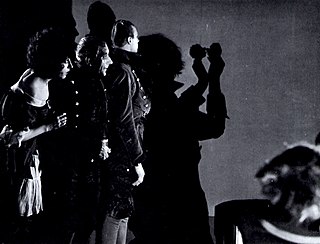
Schatten – Eine nächtliche Halluzination is a 1923 German silent film directed and co-written by Arthur Robison, and starring Fritz Kortner and Ruth Weyher. It is considered part of German Expressionism.
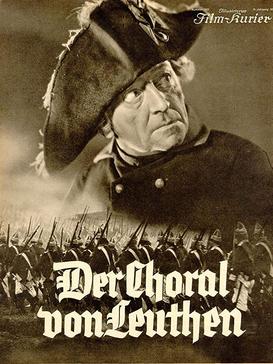
The Hymn of Leuthen is a 1933 German film depicting Frederick the Great, directed by Carl Froelich starring Otto Gebühr, Olga Tschechowa and Elga Brink. It was part of the cycle of nostalgic Prussian films popular during the Weimar and Nazi eras. The title refers to the 1757 Battle of Leuthen.
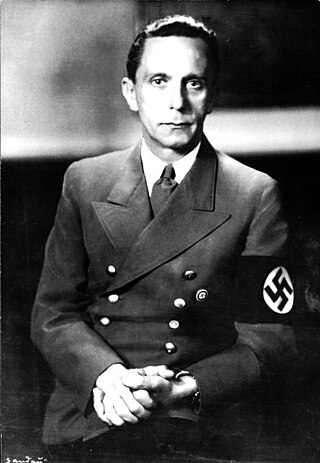
The Reich Ministry for Public Enlightenment and Propaganda, also known simply as the Ministry of Propaganda, controlled the content of the press, literature, visual arts, film, theater, music and radio in Nazi Germany.
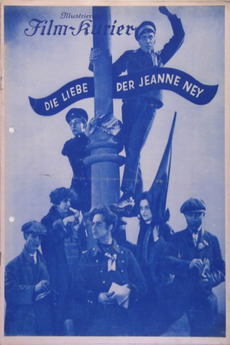
The Love of Jeanne Ney, released as Lusts of the Flesh in the United Kingdom, is a 1927 German silent drama film directed by Georg Wilhelm Pabst based on a novel by Ilya Ehrenburg.
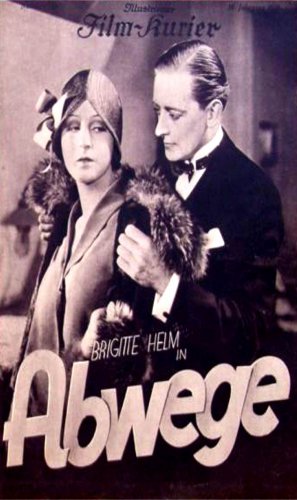
The Devious Path, also titled Crisis, is a 1928 German silent drama film directed by Georg Wilhelm Pabst starring Gustav Diessl and Brigitte Helm.

Doña Juana is a 1927 German silent comedy drama film directed by Paul Czinner and starring Elisabeth Bergner, Walter Rilla, and Hertha von Walther. It was based on a Spanish play by Tirso de Molina. The adaptation was done by Béla Balázs, who later tried to have his name removed from the credits because he disliked the finished version of the film. The film was shot on location around Seville and Granada in southern Spain.
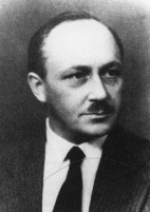
Erich Karl Heinrich Kettelhut was a German production designer, art director and set decorator. Kettelhut is considered one of the most important artists in the history of early German cinema, mainly for his set direction for Die Nibelungen (1924) and his design and visual effects for Metropolis (1927). His early career was defined by a working relationship with fellow designers Otto Hunte and Karl Vollbrecht, the trio working on many of Fritz Lang's early German films. Despite being best known for his iconic visuals on several of the most important films of German Expressionist cinema, he is also noted for a career spanning into the 1960s and his work on more light-hearted films and musicals.

The Tempelhof Studios are a film studio located in Tempelhof in the German capital of Berlin. They were founded in 1912, during the silent era, by German film pioneer Alfred Duskes, who built a glass-roofed studio on the site with financial backing from the French company Pathé. The producer Paul Davidson's PAGU then took control and constructed a grander structure. The First World War propaganda drama The Yellow Passport, the historical comedy Madame DuBarry and the expressionist 1920 silent film The Golem were made there by PAGU.
Decla-Film was a German film production and distribution company of the silent era, founded by Erich Pommer and Fritz Holz in February 1915.